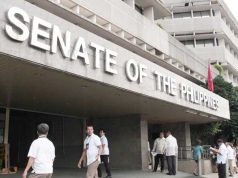No new cases of coronavirus strain, according to DoH
By Vann Marlo M. Villegas, Reporter
and Kyle Aristophere T. Atienza
THIRTY-FOUR people who had close contact with a dozen patients infected with a more contagious coronavirus strain have tested positive for the virus, but six were negative for the new variant, according to Philippine health authorities.
There were now 17 confirmed cases of the new virus strain in the Philippines.
The Department of Health (DoH) on Monday said 116 of 144 close contacts of the 12 people from Bontoc, Mountain Province in the country’s north who carried the strain first detected in the United Kingdom had been tested.
The index case for the UK variant cases in Bontoc was a migrant Filipino who arrived in the Philippines on Dec. 13 and tested negative upon arrival and went home to Bontoc the following day, Health Undersecretary Maria Rosario S. Vergeire told an online news briefing.
Ms. Vergeire said they celebrated Christmas and had a tribal ritual on Dec. 26. The patient showed symptoms on Dec. 29.
She also said authorities had identified three clusters of infection but there was nothing definite yet. “We’re still studying all the details we’ve gathered.”
Ms. Vergeire also said four of the 97 contacts of a patient who was infected with the UK coronavirus strain from La Trinidad, Benguet had tested positive for the coronavirus disease 2019 (COVID-19) virus.
They were household members of the patient — the mother, father, sibling and grandmother. She did not say which virus type they had.
Meanwhile, health authorities have found the person with the new variant from Iloilo City who arrived on Dec. 29 from Lebanon, Ms. Vergeire said. Another passenger from Rizal was still being verified.
A patient from Calamba, Laguna had also tested for the coronavirus strain.
The first Filipino who tested positive for the UK strain was a 29-year-old Filipino male who arrived on Jan. 7 from the United Arab Emirates (UAE).
DoH reported 1,581 coronavirus infections on Monday, bringing the total to 514,996. The death toll rose by 50 to 10,292, while recoveries increased by 13 to 475,422, it said in a bulletin.
There were 29,282 active cases, 84.3% of which were mild, 8.6% did not show symptoms, 4.1% were critical, 2.6% were severe and 0.51% were moderate.
Quezon City reported the highest number of cases at 89, followed by Cebu City at 88, Cavite at 80, Davao City at 78 and Cebu at 50.
DoH said 14 duplicates, 13 of which have recovered, and 190 cases found to have tested negative were removed from the tally. Of the 190 cases, 189 have recovered. One recovered patient was reclassified as a death.
Four laboratories failed to submit their data on Jan. 24, it said. About 7.1 million Filipinos have been tested for the coronavirus as of Jan. 23, according to DoH’s tracker website.
The coronavirus has sickened about 99.8 million and killed more than 2.1 million people worldwide, according to the Worldometers website, citing various sources including data from the World Health Organization (WHO). About 71.8 million people have recovered, it said.
Also on Monday, the Budget department said local government chiefs could tap their calamity fund for coronavirus vaccine orders.
The Office of the President would authorize the spending if they have proof that they are in dire need of the shots, Budget Secretary Wendel E. Avisado told a televised news briefing.
The Union of Local Authorities of the Philippines earlier asked the National Government to allow local governments to use their calamity funds for vaccine orders.
Mr. Avisado said local governments could buy their own vaccines under a tripartite deal with the central government and drug maker for safety.
“There is no problem with local governments buying their own vaccines,” he said. “That is allowed by President Duterte, but that should be done in a coordinated manner.”
Mr. Avisado said more than 84% of the country’s P82.5-billion budget for vaccines would be borrowed overseas.
He said the World Bank and Asian Development Bank (ADB) were on standby to lend money for the country’s immunization drive. The government is expected to inoculate as many as 70 million Filipinos against the coronavirus this year.
Vaccine supplies would not be enough to cover everyone and “it will take years before we achieve herd immunity,” he said in a Viber message.
The vaccine doesn’t have to be given to all Filipinos based on herd immunity, when a large portion of the population becomes immune to the disease, making its spread unlikely.



